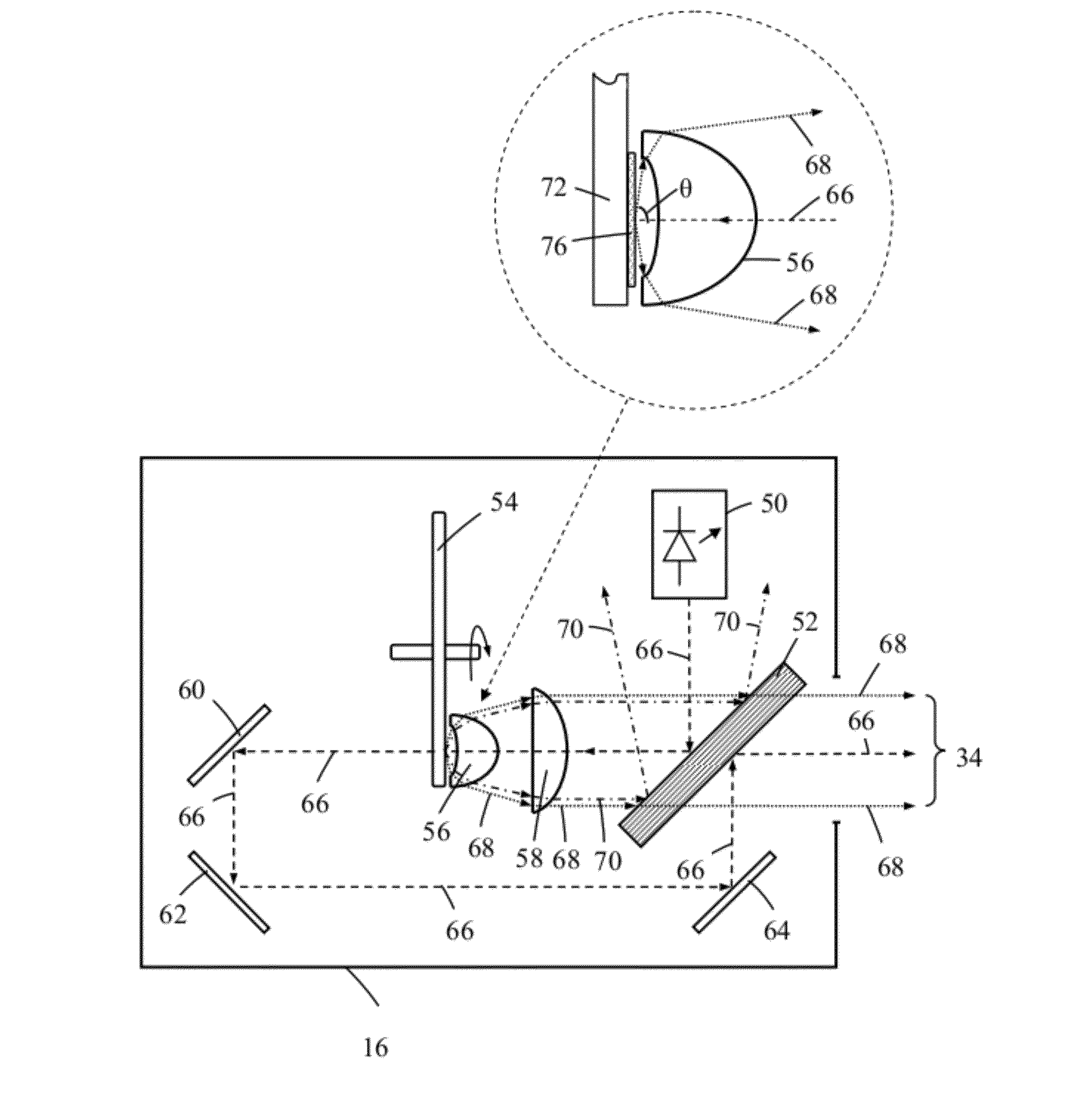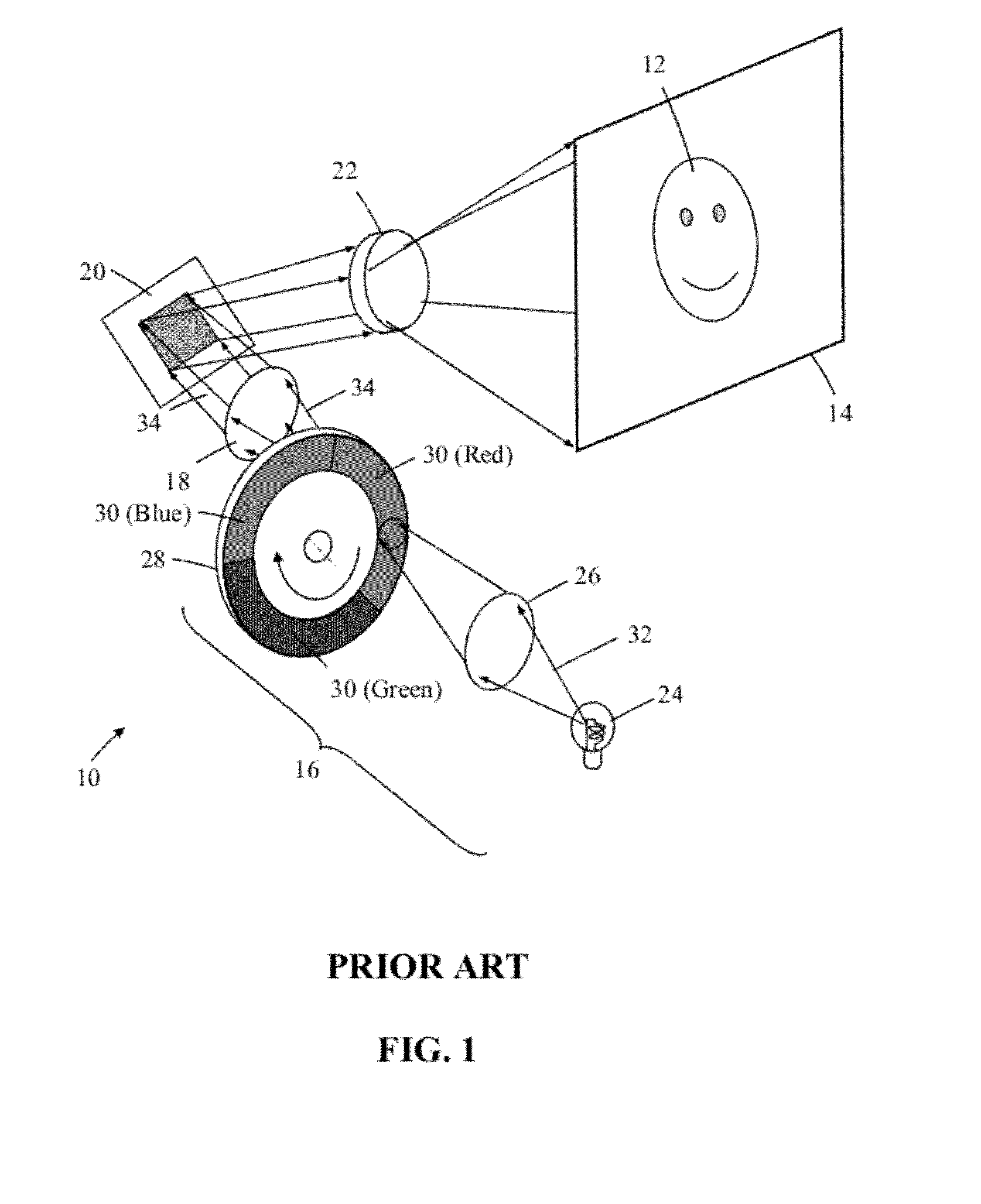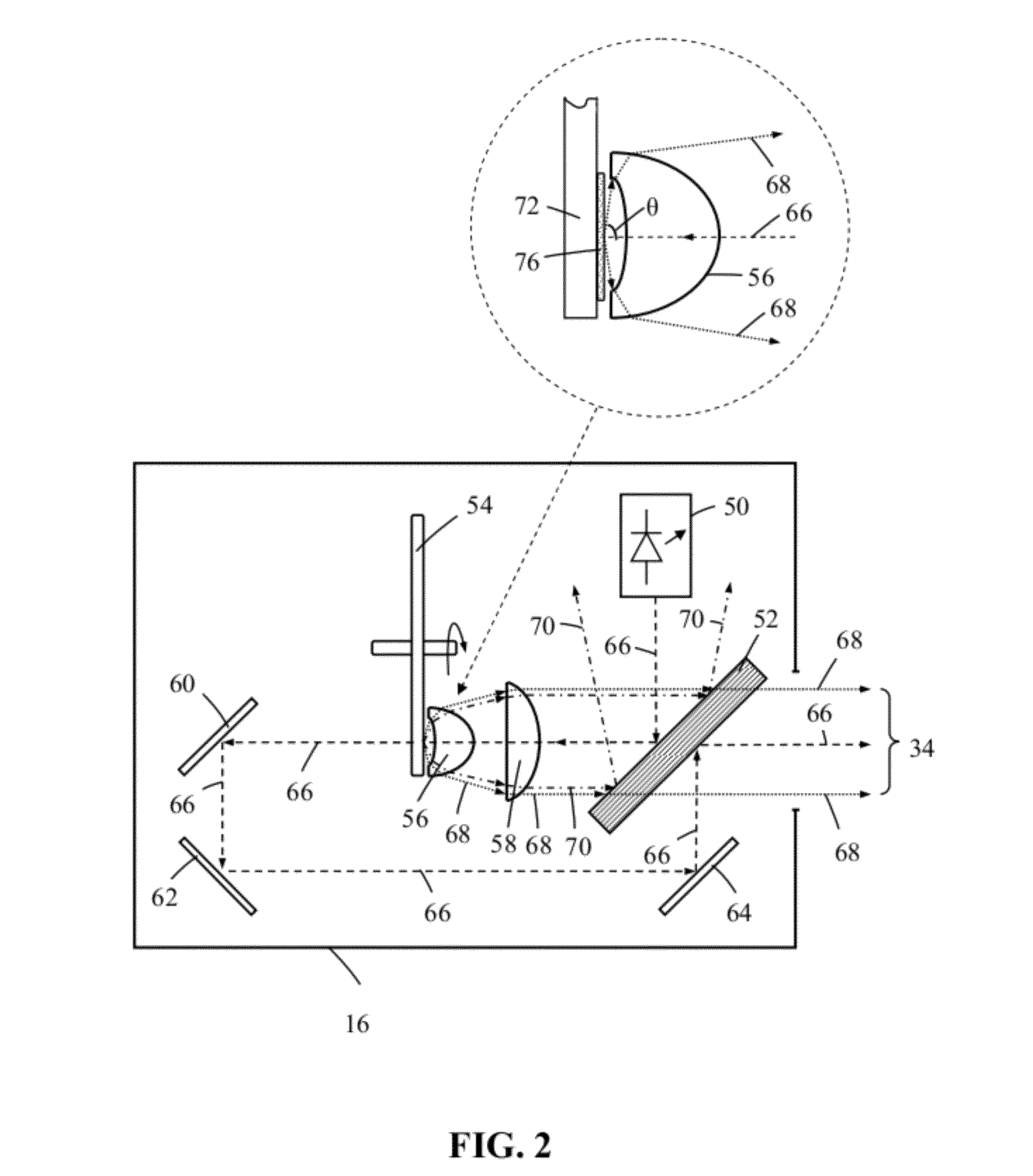Photoluminescence color wheels
a color wheel and photoluminescence technology, applied in the field of color wheels, can solve the problems of high cost, relative short operating light expectancy (approximately 4000 to 6000 hours), etc., and achieve the effect of increasing the area of photoluminescence materials
- Summary
- Abstract
- Description
- Claims
- Application Information
AI Technical Summary
Benefits of technology
Problems solved by technology
Method used
Image
Examples
Embodiment Construction
[0051]Throughout this patent specification like reference numerals are used to denote like parts. For the purposes of illustration only, the following description is made with reference to photoluminescence material embodied specifically as phosphor materials. However, the invention is applicable to any type of photoluminescence material, such as phosphor materials and quantum dots. A quantum dot is a portion of matter (e.g. semiconductor) whose excitons are confined in all three spatial dimensions that may be excited by radiation energy to emit light of a particular wavelength or range of wavelengths. As such, the invention is not limited to phosphor based wavelength conversion components unless claimed as such.
[0052]A color modulated light source 16 for a digital projection system in accordance with an embodiment of the invention is now described with reference to FIG. 2. As shown in FIG. 3 the light source 16 is operable to generate a color modulated emission product 34 comprisin...
PUM
 Login to View More
Login to View More Abstract
Description
Claims
Application Information
 Login to View More
Login to View More - R&D
- Intellectual Property
- Life Sciences
- Materials
- Tech Scout
- Unparalleled Data Quality
- Higher Quality Content
- 60% Fewer Hallucinations
Browse by: Latest US Patents, China's latest patents, Technical Efficacy Thesaurus, Application Domain, Technology Topic, Popular Technical Reports.
© 2025 PatSnap. All rights reserved.Legal|Privacy policy|Modern Slavery Act Transparency Statement|Sitemap|About US| Contact US: help@patsnap.com



